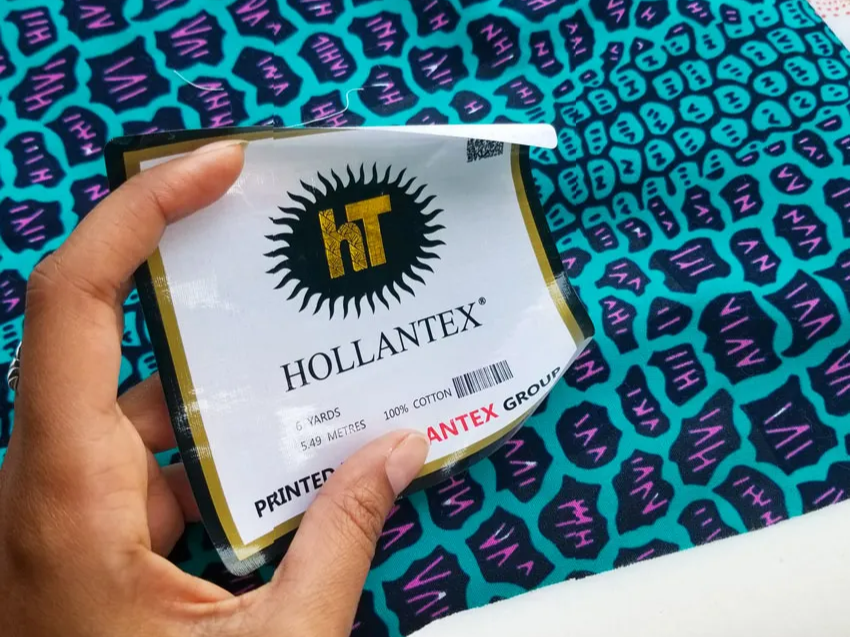So you bought new fabric and are excited about it but the only issue is you don’t know how to remove the label off the cloth in a clean and sleek way. Or worse, maybe you tried removing the label in a haste and it didn’t come off properly so now you are left with all this white, sticky residue. Don’t know what to do to get it off? Chances are you are not alone. Most people are looking for information on how to care for African print fabrics. The good news is that this article outlines the steps to remove labels from African print fabrics, so keep reading!
Firstly, I know exactly what it is like to own something new but risk the fear of ruining it at the same time because you do not have the full or complete knowledge of how to take care of African print fabrics. Never attempt to remove the sticker by hand alone. It might work but in most cases, it will not remove properly and you will be left with sticky patches of paper on the material. Don’t try washing it or submerging in liquid either as that might only exacerbate the problem
How Do You Remove the Sticky Labels from African Print Fabrics?
There are three main steps to remove labels from African print fabrics, the last of which can be repeated multiple times to get the area of sticker off. For this you will need a steam iron, a paper towel (or a large piece of plain cotton fabric) that is large enough to cover the fabric and an ironing table.
Step One: Lay out your fabric carefully on the ironing table with the side the sticker is on facing upwards and then plug in your steam iron being careful to set the temperature at the medium or cotton setting. Allow the steam iron to heat up and then move to step two.
Step Two: Once the steam iron has reached the desired temperature setting, you can now take the piece of paper towel and place it over the fabric, covering the entire surface area of the sticker. If the fabric has multiple stickers on it, don’t panic. You will notice later on that you can repeat this step with the other stickers towards removing them one by one.
Step Three: Then use the heated iron to press and go over the paper towel in a back and forth or clockwise motion for 10 seconds. This helps the heat and steam to saturate the entire sticker and soften the adhesive underneath so that you can peel it off easily.
Using your fingers, lift one corner or edge of the sticker and peel if off the fabric in slow motion. Be careful not to rush this step or go at it too fast to avoid tearing the sticker and the paper will peel off leaving your fabric neat and clean without any residue. You can then repeat steps two and three for other stickers on the fabric, no matter the size – big or small.
In the event that there is some residue left over, there could be many reasons for this. Maybe it is because you initially ripped the sticker before following realizing it or didn’t iron over the paper towel properly or the steam iron’s temperature setting was not hot enough. Whatever the case might be, you can simply follow and repeat these same steps above to remove the residue.
Finally, this is where you can proceed to wash your fabric before use. Please note that at this point, washing does not remove the sticker label or adhesive behind it. You are not washing the fabric in order to remove any residue from the stickers but to simply get it clean and crisp for sewing or anything else you might want to use it for. It is always best practice to wash your fabrics before use.
If you are a visual person, then you might have skipped all the text above and jumped to this section, which is totally fine! Watch this YouTube video from Juliet Uzor of Sew So Natural who will go on to demonstrate how to remove labels from African print fabrics even when it is tricky or the fabric appears to be damaged. After this, there should be no fear of ruining your fabrics anymore. As you will see, you can redeem them from any sticker damage!
Did you find this information on steps to remove labels from African print fabrics helpful to you?
Discover more from Jamila Kyari Co.
Subscribe to get the latest posts sent to your email.

